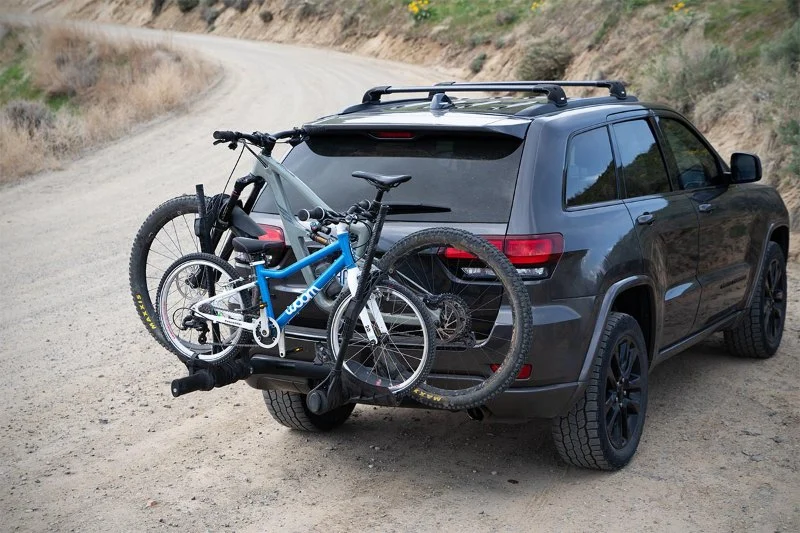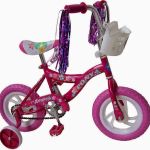
- Why Bike Transportation Matters
- Car Racks for Transporting Bikes
- Shipping Your Bike
- Air Travel Methods for Bikes
- Real-Life Bike Transportation Experiences
Why Bike Transportation Matters
Whether you're heading out for a cycling adventure, traveling to a race, or relocating to a new city, transporting your bike safely and efficiently is key. Bikes are often a significant investment, and their condition can greatly affect your riding experience. Proper transportation methods help protect your bike from damage, ensuring it arrives at your destination ready to ride. Knowing how to transport your bike efficiently is essential, especially when you’re traveling long distances or to unfamiliar places.
In this article, we’ll explore the most common ways to transport bikes: using car racks, shipping, and air travel. Each method has its pros and cons, and choosing the right one depends on your specific needs. Let’s dive into the details of each option.
Car Racks for Transporting Bikes
Car racks are one of the most popular and accessible ways to transport bikes, especially for short trips or when you’re traveling by car. They are relatively easy to install and use, making them a great choice for everyday cyclists. Car racks come in three main types: roof racks, hitch racks, and trunk racks. Let’s take a closer look at each one:
1. Roof Racks
Roof racks are mounted on the roof of your car and are perfect for those who need to carry multiple bikes or want to keep their car’s trunk space free. They allow you to load the bike directly onto the roof and can be great for larger vehicles or those with an elevated height. However, roof racks can be more difficult to load and unload, especially for heavier bikes. They also require careful height consideration to avoid hitting low-clearance areas like parking garages.
2. Hitch Racks
Hitch racks attach to your vehicle’s hitch receiver and are an excellent option for easy loading and unloading. They can carry multiple bikes, and some models even allow for tilting or folding to access the trunk. Hitch racks are usually more stable than roof racks and are easier to load. However, they do require a hitch receiver, which may not be available on every car.
3. Trunk Racks
Trunk racks are an affordable and easy-to-install option that attaches to the rear of your car. They are compact and lightweight, making them great for casual cyclists. However, they may not be as secure as roof or hitch racks, and they can block rear visibility, which may be a safety concern for some drivers. If you're looking for a quick and budget-friendly option, trunk racks are a good choice for occasional bike transport.
Shipping Your Bike
Shipping your bike is often the most convenient option when you need to send it across long distances or if you're traveling abroad. Professional bike shipping services are designed to ensure your bike arrives in one piece, even if it’s being transported by ground or air. Let’s look at how shipping works:
1. Packing Your Bike
Before shipping your bike, proper packing is essential. Most bike shipping companies provide bike boxes that are designed to keep your bike secure during transit. You'll need to disassemble parts of your bike, such as the wheels, pedals, and handlebars, and secure them within the box to avoid damage. For additional protection, you can add bubble wrap or foam padding around the frame.
2. Choosing a Shipping Service
There are various bike shipping companies, such as BikeFlights and ShipBikes, that offer reliable services. These companies provide different shipping methods depending on your budget and timeline. For international shipping, you'll want to research customs requirements and shipping regulations for your destination country.
3. Costs and Timing
Shipping costs vary based on factors such as the size of your bike, the shipping distance, and the type of service you choose. Ground shipping is typically more affordable but slower, while air shipping is faster but comes with a higher price tag. Be sure to factor in delivery time when planning your trip to ensure your bike arrives in time.
Air Travel Methods for Bikes
When flying with your bike, you’ll need to pack it securely and follow the airline's specific guidelines for bike transportation. Air travel methods are ideal for cyclists who want to bring their bike to a race, event, or vacation destination. Let’s explore the best practices for flying with a bike:
1. Bike Boxes or Cases
Airlines generally require bikes to be packed in a hard-shell bike case or cardboard box. These cases are designed to protect your bike from the rough handling that can occur during air travel. Hard-shell bike cases provide more protection but are often more expensive and can be bulky. On the other hand, cardboard boxes are lighter and more affordable but offer less protection, so additional padding may be necessary.
2. Airline Policies
Each airline has its own policies for transporting bikes, including size restrictions, fees, and packing requirements. Some airlines allow bikes to be checked as part of your luggage allowance, while others charge extra fees. It’s important to check your airline’s guidelines well in advance to avoid surprises and ensure your bike is ready for travel.
3. Additional Considerations
Flying with a bike also means navigating the airport with a large case or box. Some travelers choose to ship their bike in advance to avoid the hassle of carrying it through the airport. Additionally, you may need to arrive early for check-in, as some airlines require special handling for large items like bikes.
Real-Life Bike Transportation Experiences
Many cyclists have faced challenges when transporting their bikes. Let’s look at some real-life stories of how cyclists have navigated the various methods of bike transportation:
1. Sarah’s Cross-Country Bike Trip
Sarah, an avid cyclist, decided to take her bike on a cross-country road trip. She used a roof rack to transport her bike across multiple states, enjoying the convenience and safety it provided. However, the real challenge came when she reached a city with tight parking garages. After a few close calls, Sarah switched to a hitch rack, which was easier to manage and provided more stability. This allowed her to continue her journey without worrying about parking restrictions.
2. Jake’s International Race
Jake needed to fly to France for an international cycling race, and he was concerned about how to get his bike there safely. He chose to ship his bike with a specialized bike shipping service to ensure it would arrive safely and on time. Despite the initial cost, the service allowed Jake to track his bike’s progress and helped him avoid the hassle of carrying it through the airport. The bike arrived in perfect condition, and Jake was able to focus on his race instead of worrying about his bike’s safety during the flight.
These stories highlight the different methods cyclists use to transport their bikes and the challenges they face. Whether by car, shipping, or air travel, the key to successful bike transportation is planning ahead and choosing the right method for your specific needs.







 Norcal Bike Sport4.0 (97 reviews)
Norcal Bike Sport4.0 (97 reviews) Bicycle Depot Kansas City5.0 (117 reviews)
Bicycle Depot Kansas City5.0 (117 reviews) L&D Cycles Corp4.0 (49 reviews)
L&D Cycles Corp4.0 (49 reviews) e-BIKERY Electric Bikes Rentals, Services, and Sales4.0 (163 reviews)
e-BIKERY Electric Bikes Rentals, Services, and Sales4.0 (163 reviews) Canyon Bicycles4.0 (74 reviews)
Canyon Bicycles4.0 (74 reviews) Far East Children Bicycle Factory1.0 (1 reviews)
Far East Children Bicycle Factory1.0 (1 reviews) How to Teach Kids to Ride a Bike: A Step-by-Step Guide for Parents
How to Teach Kids to Ride a Bike: A Step-by-Step Guide for Parents Tips for Riding on Busy City Streets: Smart Strategies for Urban Cyclists
Tips for Riding on Busy City Streets: Smart Strategies for Urban Cyclists Best US National Parks for Mountain Biking: Ride Epic Trails Across America
Best US National Parks for Mountain Biking: Ride Epic Trails Across America Best Aero Helmets for Time Trials and Racing
Best Aero Helmets for Time Trials and Racing How to Clean and Lubricate Your Bike Chain Like a Pro
How to Clean and Lubricate Your Bike Chain Like a Pro 10 Must-Have Items for Long-Distance Cycling Trips
10 Must-Have Items for Long-Distance Cycling Trips